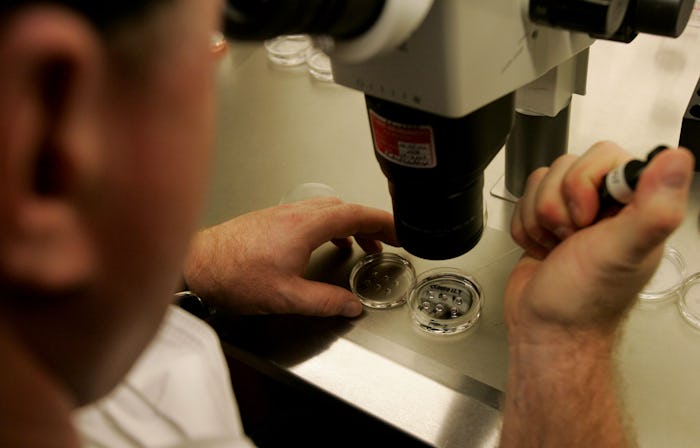Life

How Scientists Are Trying To Improve The IVF Process
While there's no denying that in vitro fertilization has been a huge success and helped countless women become pregnant over the years, the expensive medical procedure can also be completely devastating if it doesn't work out. There are also some downsides to IVF that have people concerned over whether or not they should give it a try to help them conceive. Luckily, for those still wary of the costs and potential side effects, researchers at the University of Murcia in Spain are trying to improve the IVF process to make it even more successful by making the Petri dish environment more like that of the fallopian tubes.
For those less familiar with the particulars of IVF, the American Pregnancy Association defines it as "the process of fertilization by extracting eggs, retrieving a sperm sample, and then manually combining an egg and sperm in a laboratory dish. The embryo(s) is then transferred to the uterus." Over 60,000 women in the United States use IFV to conceive every year, however, there is still room for considerable improvement. One problem with IFV, according to Stat News, is that babies conceived through this process are at a slightly higher risk for certain birth defects and genetic disorders. They're also more likely to be born at a low birth weight.
The researchers at the University of Murcia in Spain aim to address these problems by transforming the petri dish environment into a more hospitable environment for the embryos. They hope to achieve this by culturing women’s eggs in a dish containing fluid from her own reproductive tract; Doctors will extract oviductal fluid from the woman undergoing IVF and culture her eggs with it during the fertilization process.
In the female reproductive system, oviductal fluid is where ovum transport and maturation, sperm transport and maturation, fertilization and embryo transport, and early development take place. The researchers hope that by adding this element to the IVF process, embryos will grow more successfully and develop side effects less frequently. They're hopeful that this experiment will go well because similar studies in animals have supported this very same idea.
The researchers at the University of Murcia in Spain plan to launch their experiments in September. They will monitor eggs fertilized with fluid from the female's own reproductive tract, as well as eggs cultured by the conventional IVF procedure, and hope to see enough positive results to one day start "a bank of fluid from human donors, which could then be given to women undergoing IVF, akin to an off-the-shelf blood transplant."
Only time will tell how this experiment pans out, although it does sound promising. It's great to see a group of dedicated researchers invested in improving the IVF process, as well. If all goes well with this experiment, it could make a world of difference for women hoping to conceive through the IVF process and for the future of fertility and conception altogether.
This article was originally published on